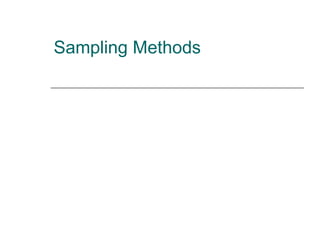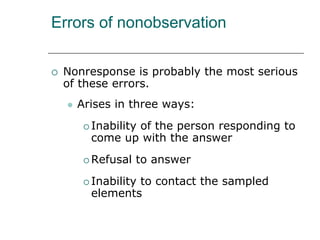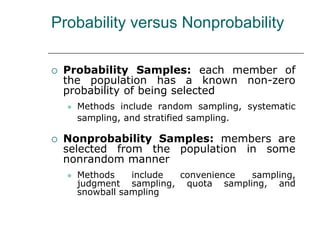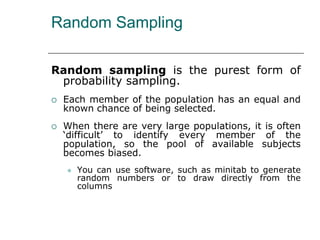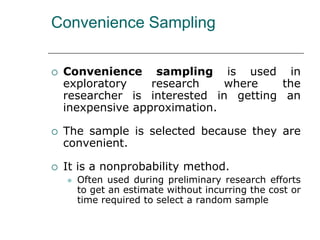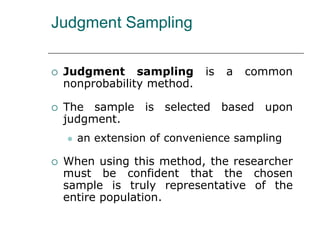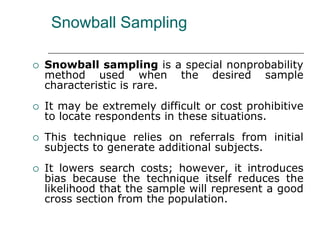The document discusses sampling methods, emphasizing the importance of defining the target population and utilizing probability and nonprobability techniques effectively. It describes various sampling methods, including random, systematic, stratified, cluster, and nonprobability options like convenience and judgment sampling, as well as their respective advantages and challenges. Additionally, it addresses potential errors in observation and non-observation that can impact the quality of research findings.
